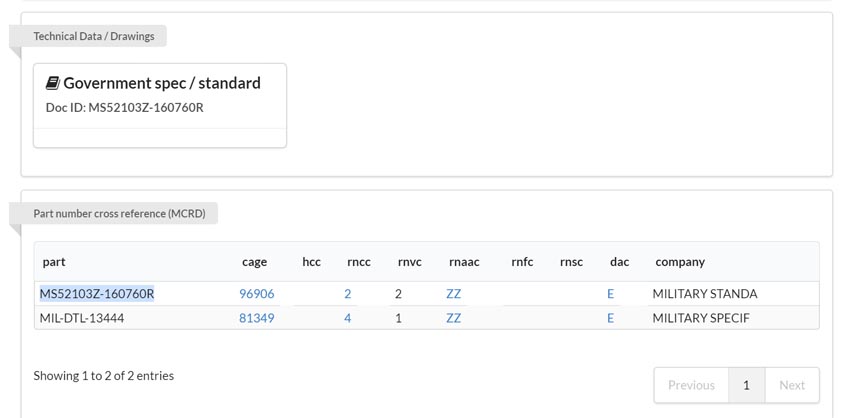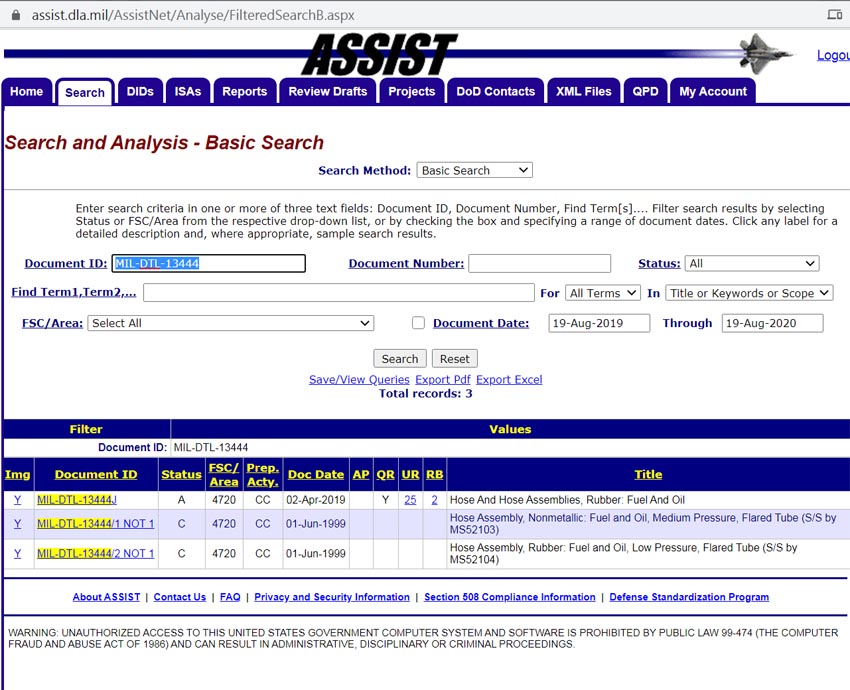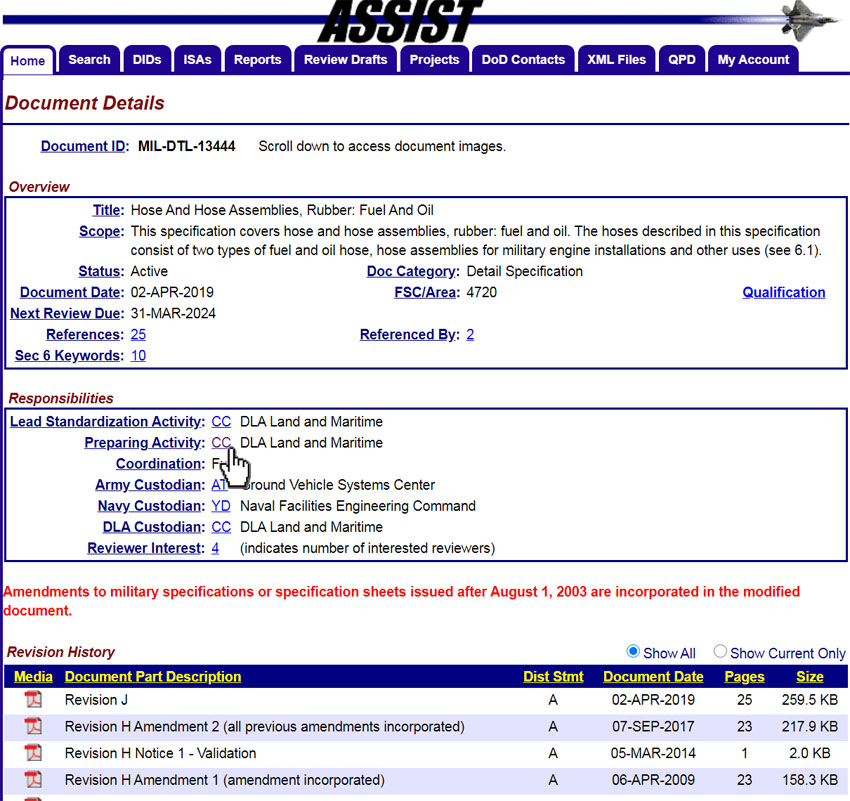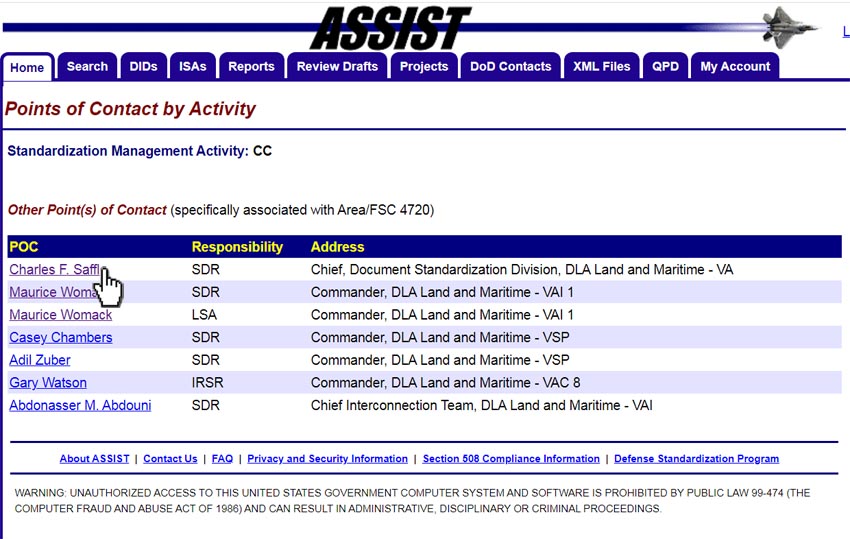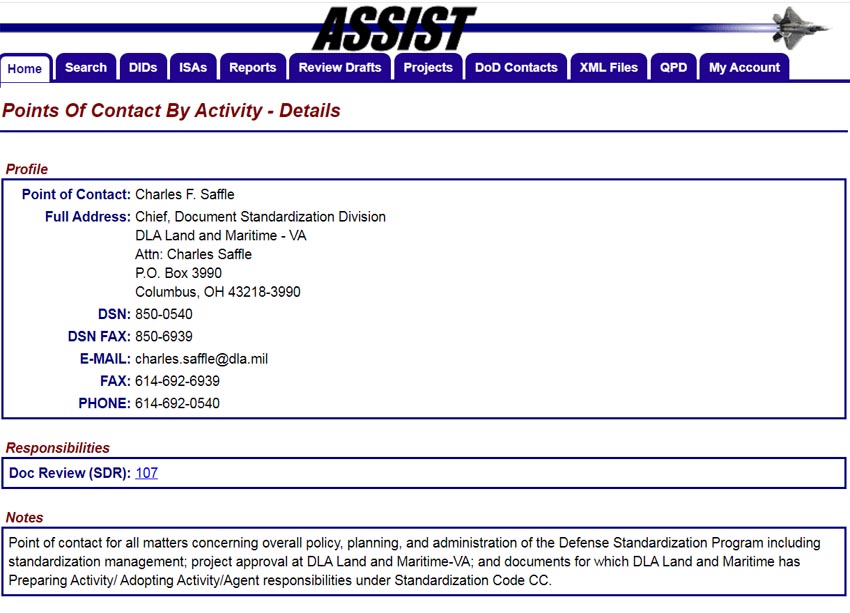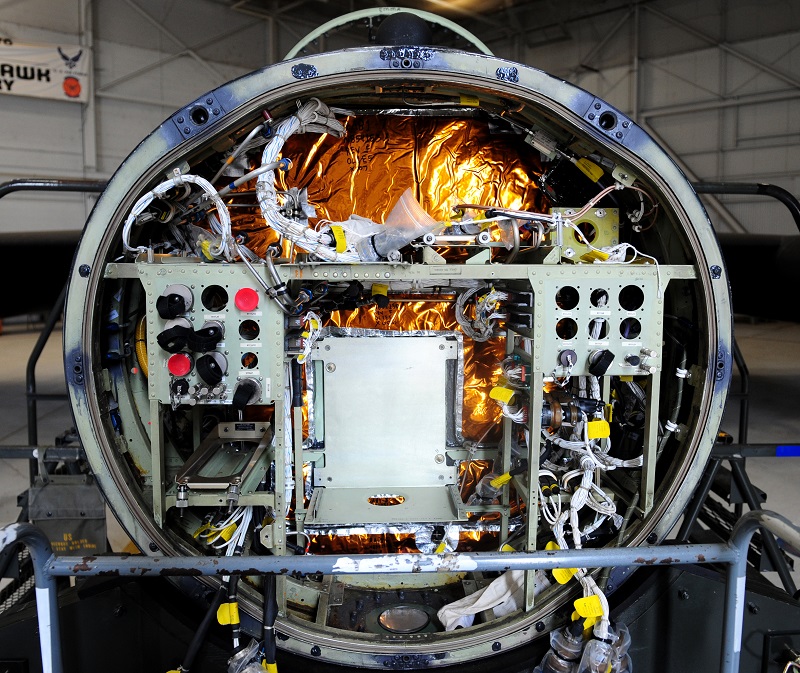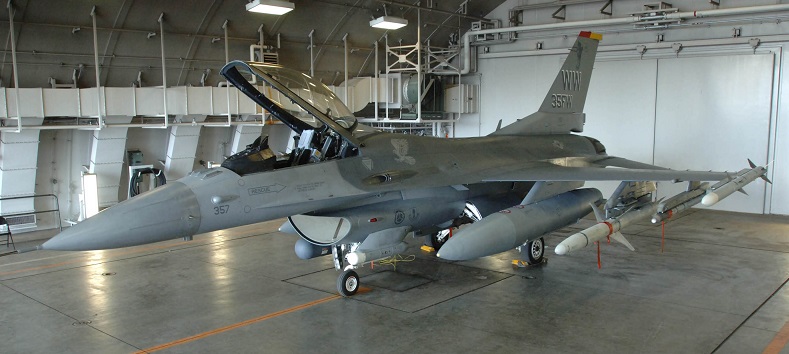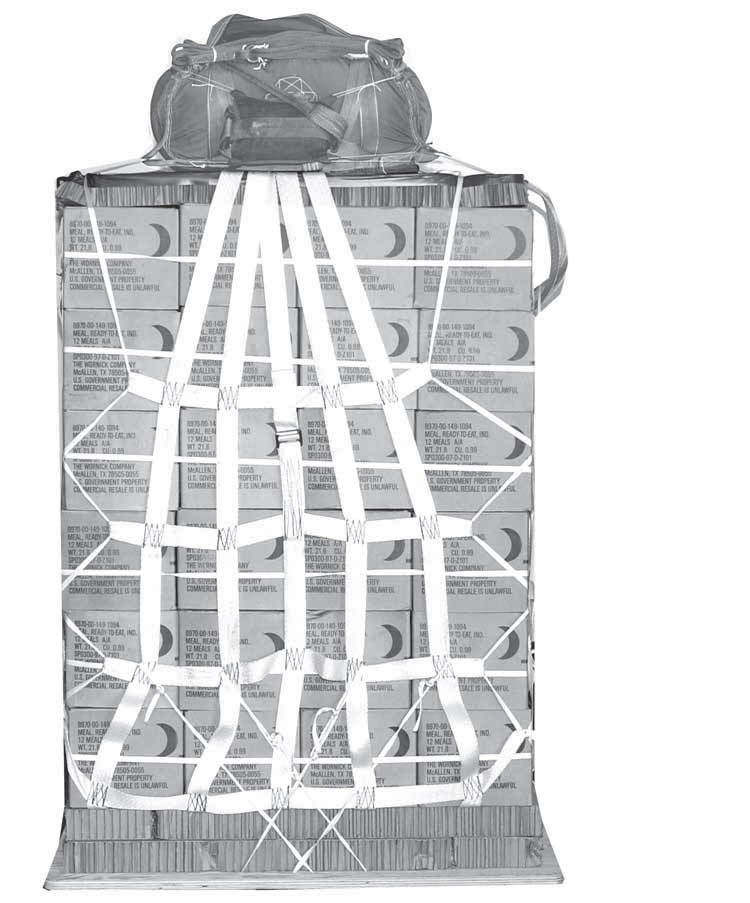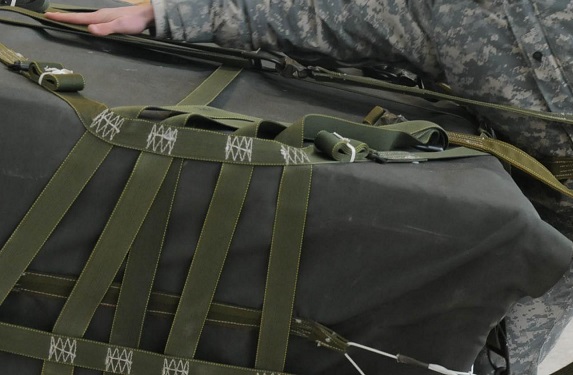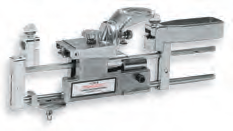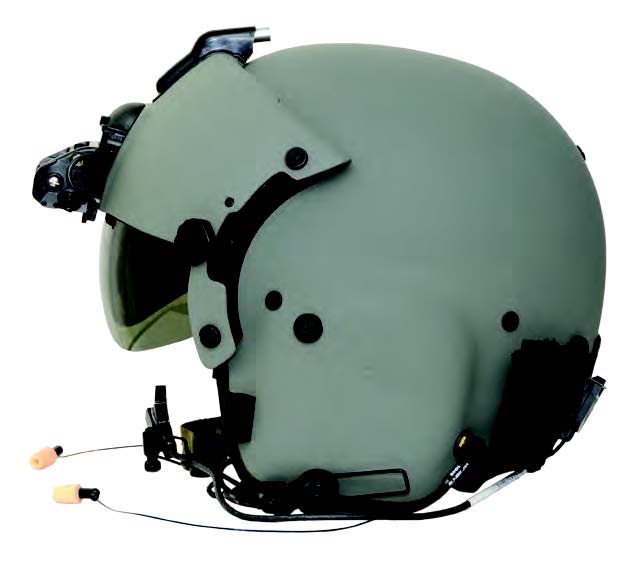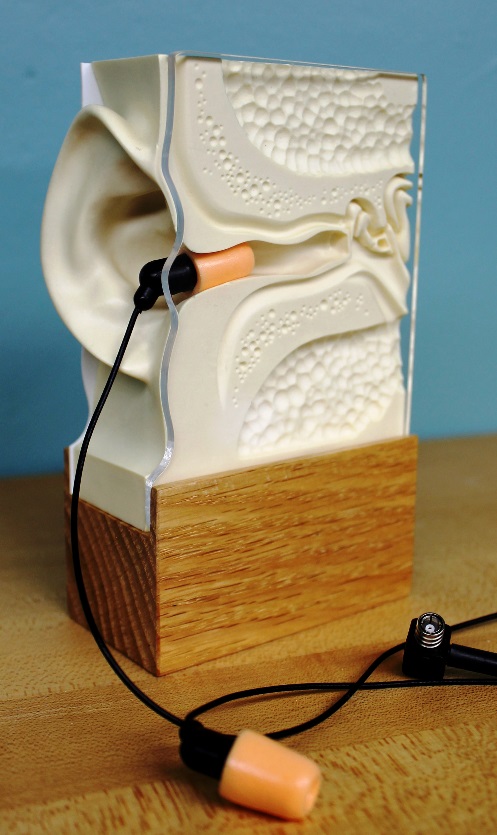As a continuation of our Government Contracting Bootcamp, I wanted to cover military solicitations. Anything that’s not purchased through DOD Fedmall or Credit Card is likely procured through solicitations for competitive acquisition. These lengthy documents include detail about the products being procured, the procuring agency, limitations on company size, and contract clauses from the Federal Acquisition Regulations (FAR).
If it’s your first time reading a defense contract, it is a good idea to read (or at least skim) the whole document. The first few pages contain pertinent information about the procurement, while the remainder often contains boiler-plate legal language. Much of the boiler-plate stuff doesn’t change from contract to contract, so after an initial review one can focus on the top of the document.
There are several types of solicitations that you will regularly see:
Request for Quotation (RFQ) – The bulk of military buying activity through the Defense Logistics Agency (DLA) is done through RFQs.
Request for Proposal (RFP) – Larger more complex contracts that often span multiple years where DOD submits delivery orders.
Sources Sought Solicitation – Used when the military is conducting market research to determine how many potential competitors will participate.
They are assigned a solicitation number like SPE4A0-22-T-0316, which is broken down into sections:
SPE4A0 – DLA Aviation / Hill Airforce Base
22 – Fiscal year 2022
T – Automated Solicitation
0316 – The 316th automated solicitation from SPE4A0
Automated solicitations refer to the DLA Master Solicitation which standardizes some of the contractual clauses so they don’t need to be included in every government contract. This includes the rules and regulations for how quotes are submitted and evaluated.
Government Contract Example

Click here for a full copy of solicitation SPE4A022T0316
The core information on page 1 is the buying agency, closing date, buyer contact information, and whether the solicitation is set-aside for small businesses. Each year a growing percentage of solicitations must be exclusively for small businesses. Page 1 also includes a link to the latest master solicitation and sources for technical data / drawings.
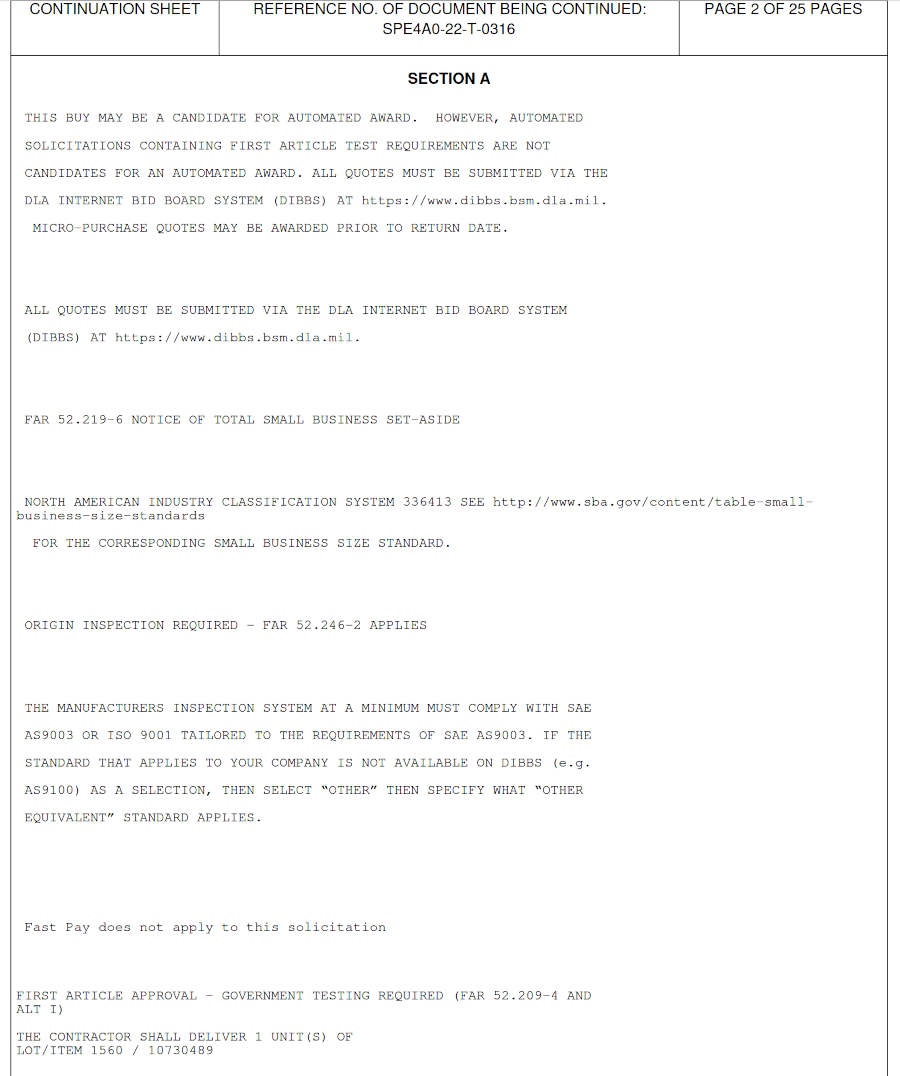
These are contract clauses that pertain to this particular solicitation. It’s an automated award, but requires a first article test item where you submit a sample for evaluation before the government buys the rest. It mentions FAR 52.219-6, a reference to the regulation requiring contracts to be set-aside for small business. The NAICS code is the commodity class that determines small business size, and inspection occurs at the vendors facility. This solicitation has a minimum inspection standard, so if your facility is not ISO-9001 or equivalent you do not qualify.
Pages 3+4 are self explanatory, so we’ll skip to page 5 where we find the item description. These page numbers will vary from contract to contract.
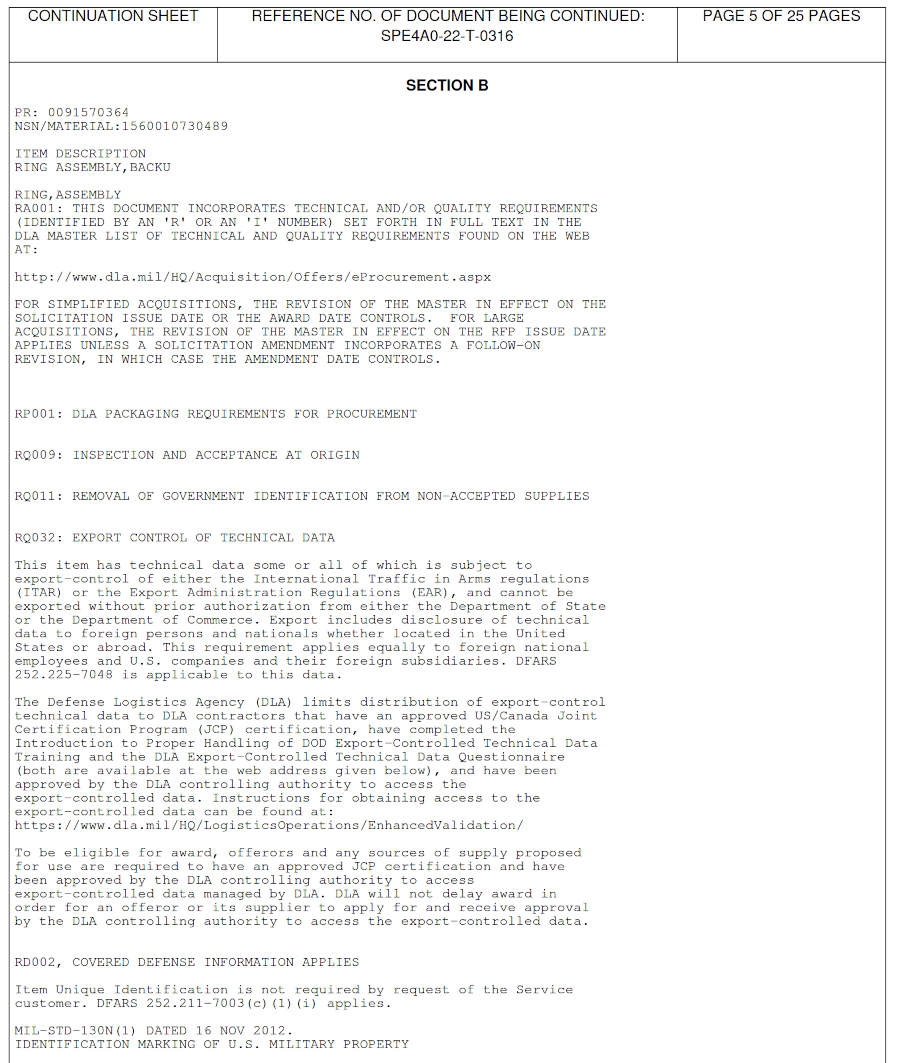
The PR number is the purchase requisition. Solicitations begin as a requisition from the person that needs the item. That requisition is sent to a buying office where it is turned into a solicitation. The National Stock Number (NSN) in this case is 1560-01-073-0489 (dashes added for readability). Almost everything the military buys is assigned an NSN, which can be used to find valuable information like who last sold it at what price. This one is a backup ring assembly used on the F-15 aircraft.
Using BidLink for research, I can see that it was last sold in 2019 by Federal Industries for $13,575 each. Technical characteristics for each NSN include specific detail about the item. In this case, this kit includes a ring, pin spring MS9048-222 (military standard), a cap NAS1474A4 20, and a rivet MS20426AD3-8.

Scrolling a few pages down we get to the first line item. This is CLIN 0001 with an order quantity of 1. This page also includes drawing numbers and technical documents that can be downloaded from the DIBBS cfolders. The vendor has 275 days to deliver the merchandise after the first article test item is approved. The next page has CLIN 0002, which is the first-article test item.

The remainder of the contract are included clauses from the Federal Acquisition Regulations. Breeze through them and read anything that might pertain to your company or this item.
Learning the basic structure of defense contracts makes them easier to read and understand. Once you have been through a few of them you can scan quickly to the relevant information and determine if a particular opportunity is a good match for your company.
BidLink is the original bid notification service dating back to the 1980s when we shipped floppy disks to government contractors. After going online in 1999, BidLink has served thousands of companies and government agencies. Our superior bid search can efficiently drill-down to contracting opportunities that make money for our clients.




